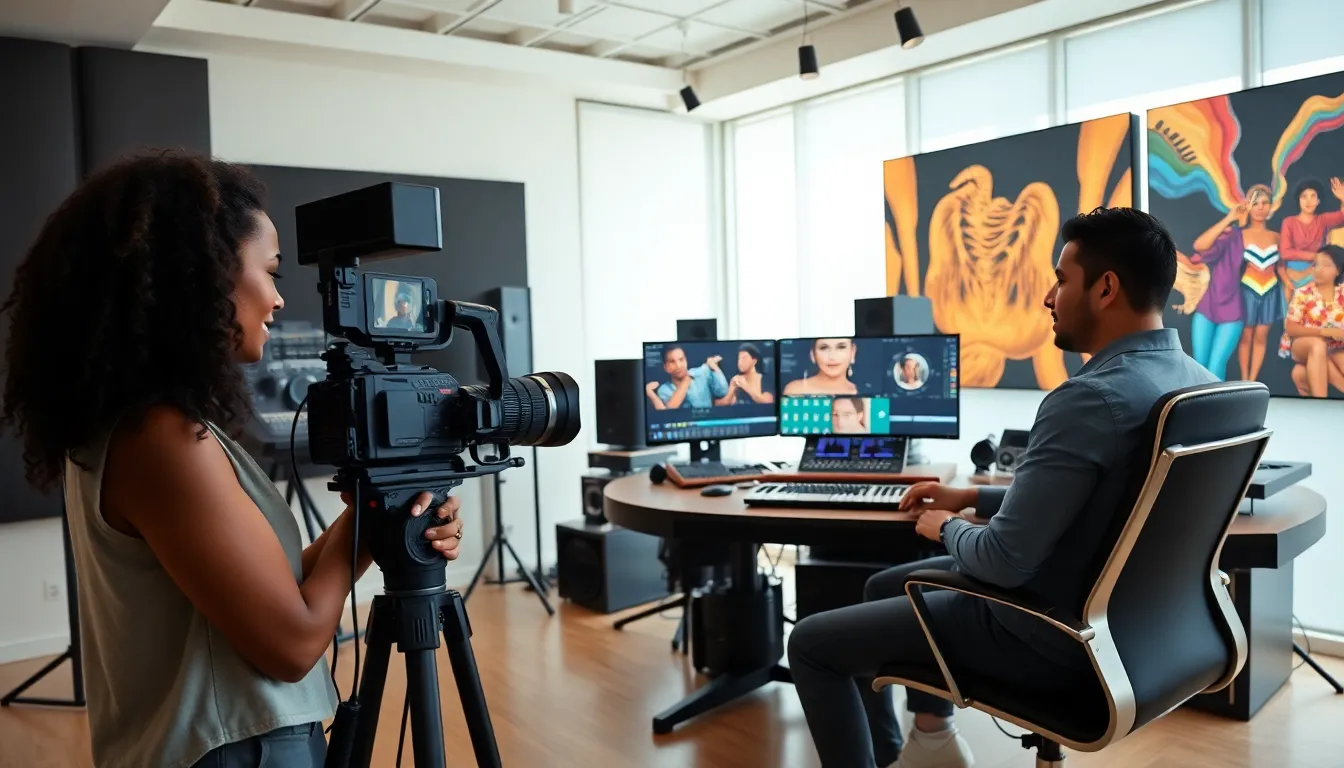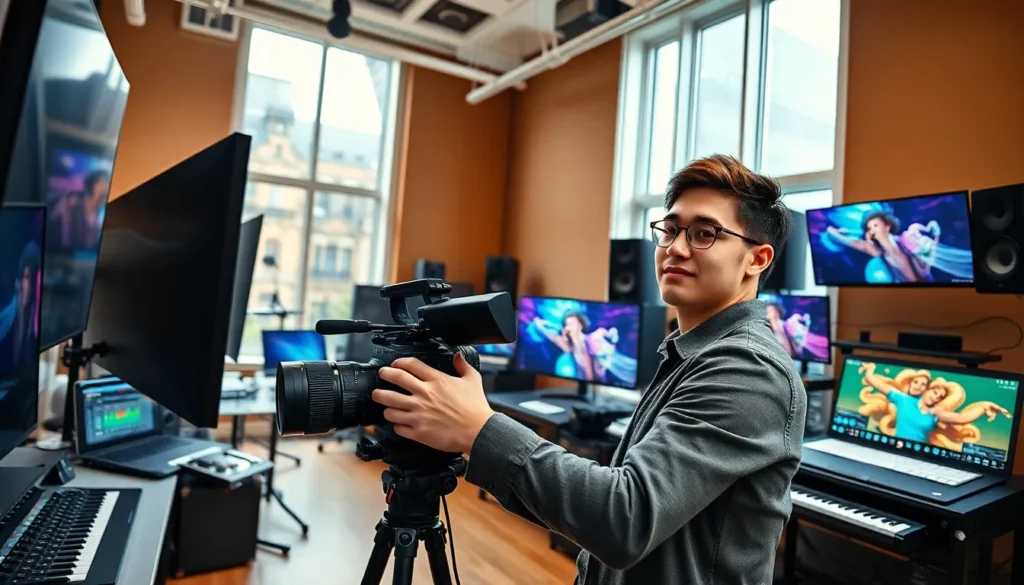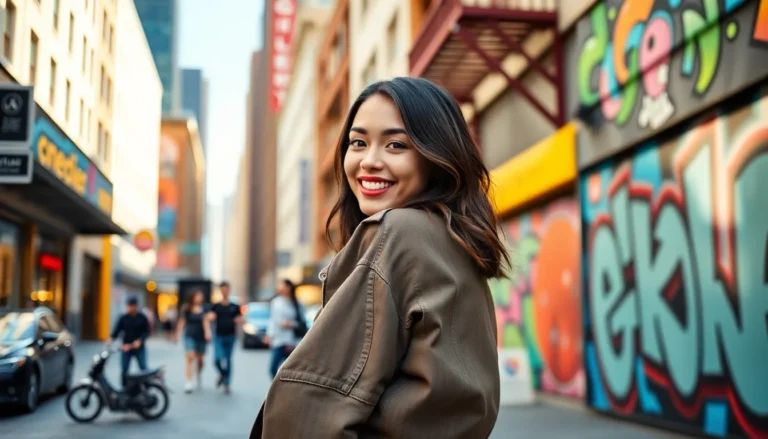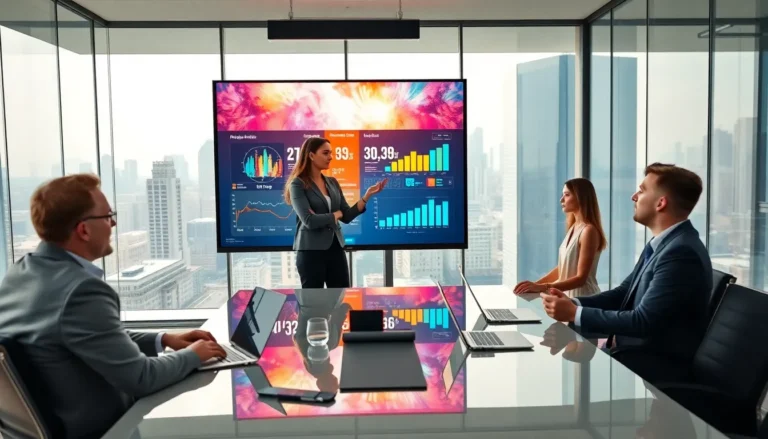Table of Contents
ToggleIn an era where every smartphone comes packed with better cameras than the average professional studio, it’s safe to say that arts audio/video technology and communications are revolutionizing how creativity takes shape. From stunning video displays at concerts to immersive audio experiences at art installations, the interplay between technology and the arts is nothing short of magical. And who wouldn’t want to be a part of that transformation? So, buckle up, because we’re about to jump into the intriguing realm of audio and video technology that’s changing the art scene forever.
Overview Of Arts Audio/Video Technology

Arts audio/video technology encompasses a diverse range of tools and platforms that enhance artistic expression and communication. This field combines audio systems, video production, and digital technology to create captivating experiences that engage audiences in dynamic ways. Think of it as the bridge connecting traditional art forms with cutting-edge technology. Historically, artists have utilized these tools to tell stories, provoke thoughts, and evoke emotions. Today, these technologies offer unprecedented opportunities for creativity. From professional installations to guerilla street art, technology enables artists to reach wider audiences than ever before, breaking down barriers and democratizing art in ways previously unimaginable.
The Role Of Audio Technology In Arts
Audio technology plays a crucial role in the arts, as sound is integral to enhancing emotional depth and storytelling. Musical performances, theater, and even visual art installations often rely on sophisticated audio systems to complement the visual elements. Consider the use of surround sound in modern theater: it creates an immersive experience that can transport audiences to another world. Also, artists are leveraging audio technology to explore new forms of creativity. For instance, sound art utilizes speakers, microphones, and software to create unique auditory experiences that engage listeners in innovative ways. The integration of digital audio workstations (DAWs) has also transformed music production, allowing artists to produce high-quality tracks from their homes. This has not only made music more accessible but also diversified the range of voices and genres emerging in today’s artistic landscape.
Video Technology Innovations In Arts
Video technology innovations are reshaping how artists approach their craft. From high-definition cameras to advanced editing software, artists can manipulate visuals in ways that were previously limited to big-budget productions. For example, augmented reality (AR) and virtual reality (VR) are being integrated into artistic practices, creating interactive experiences that engage audiences on multiple levels. These technologies allow viewers not just to observe but to participate in the artwork. Also, live-streaming platforms have democratized access to performances, enabling artists to present their work to global audiences without geographical constraints. As a result, video has become a powerful medium for storytelling, enabling artists to express complex narratives in visually stunning formats.
Communication Strategies In Arts Productions
Creative communication strategies are essential for the success of arts productions. From concept development to audience engagement, effective communication is key. This starts with shaping a clear vision and mission for the art piece. Collaborative efforts involving directors, artists, sound engineers, and videographers ensure that all elements align with the overarching narrative. Social media has also emerged as an invaluable tool in this realm. Artists and production companies can connect directly with their audiences, sharing behind-the-scenes content and building anticipation for upcoming work. Utilizing platforms like Instagram, TikTok, and YouTube allows for creative engagement beyond traditional marketing strategies. These platforms are not just promotional tools: they become integral parts of the artistic process itself, shaping how art is perceived and experienced by the public.
Integrating Technology In Arts Education
Integrating technology in arts education is crucial for preparing the next generation of artists. As the industry evolves, educational institutions must adapt their curriculums to include the latest audio and video tools. Programs that emphasize hands-on experience with modern technology better equip students for the realities of the creative job market. Institutions are increasingly incorporating software training, digital media creation, and project-based learning into their syllabi. For instance, courses focused on audio production and video editing allow students to explore their creativity while acquiring essential technical skills. Besides, arts educators are utilizing online platforms to reach a wider array of students, breaking geographical boundaries and making arts education accessible to all. Through these innovations, students are not only learning about art but also how to use technology to amplify their voices.
Future Trends In Arts Audio/Video Technology
Looking ahead, the future of arts audio/video technology is poised for exciting developments. Emerging trends such as artificial intelligence (AI) and machine learning are beginning to influence the artistic process. AI tools can analyze data to create original compositions, present feedback on artistic choices, and even assist in the editing process. This opens up new avenues of creativity while raising intriguing questions about authorship and artistic intent. Besides, the rise of 5G technology is set to revolutionize how audiences experience art. With faster internet speeds, artists can deliver high-quality live streams and interactive content seamlessly, allowing for unprecedented audience engagement. These advancements will likely lead to a more interconnected artistic community, where collaboration and experimentation thrive.







